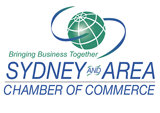WARNING: LOTS OF NUMBERS AND CHARTS AHEAD.
Like a wise Jedi master, my former employer – a CPA – once told me, “If you’re looking for the truth, just look at the numbers.”
So I downloaded the CBRM councillors’ expense report.
Here’s what I found …
Between January 2019 and March 2020 (15 months) CBRM Council was reimbursed for:
- Travel: $95,147
- Accommodations: $12,450
- Meals: $5,948
- Training: $1,226
What I didn’t find was an explanation for these expenses. Apparently that information is not made public – which leads me to the issue of transparency. I’ll talk about that in another post.
Meals and Accommodations
One has to ask:
- What was the reason for $12,450 in overnight accommodations?
- Where did council stay? Here in CBRM? Halifax? Toronto? Beijing?
- What was the nature of their almost $6,000 in meal expenses?
- Were these local meals, here in CBRM, or were these meal expenses related to travel?
Training
Then there’s the question of training. As a candidate running for councillor in CBRM District 3, I assumed that all councillors would be encouraged to enrol in courses that would provide them with new skills; perhaps to improve their communications and planning skills so they can better represent the residents of their respective districts in council . Yet, I see only two councillors claimed expenses for training.

Perhaps my priorities are out of line, but I would think that training should account for more than 1% of council’s total expenses.
Travel
The most perplexing expense of all is Travel. Most of each councillor’s travel expense is attributed to mileage – driving within their respective districts and back and forth to CBRM City Hall. So it stands to reason that the councillors of the smallest districts, nearest to City Hall (1, 5, 10) would have the lowest mileage claims.
But that’s not the case …
Analysis
All the districts have roughly between 6,000 and 9,000 residents. So a variance of up to 50% is to be expected. A variance of 350%, however, is just cause – in my opinion – for a closer examination of each councillor’s expenses.

The physical size of each district ranges from as little as 8 sq km to over 1,000 sq km. Therefore, travel expenses claimed by each councillor should be roughly proportional to the physical size of their district.
The ratio of district size to travel expense is an indication each councillor’s mileage-efficiency. The most efficient councillors will have the lowest ratios, and vice versa.
Looking at the chart below, we can clearly see there is a normal range for mileage-efficiency, and we can see which councillors managed to stay within that range.

Conclusion
First – full disclosure – in case you didn’t already know, I am running for councillor in CBRM District 3. Part of my election platform is transparency and accountability. Which is why I’ve spent so much of my free time analyzing things like expense reports.
Based on the available data, two things are clear:
- There needs to be more accountability and oversight when it comes to councillors’ expense claims. If I am elected I will push to establish expectations and impose maximums so that councillors are more fairly compensated for their mileage. I will also recommend that there is a mandatory amount of additional training required for each councillor.
- The lack of detail available to the public speaks to the need for greater transparency regarding CBRM’s operational and business practices. If elected, I will put forth a motion to review and improve public access to CBRM reports and documentation.






8
Log In or Sign Up to add a comment.- 1
arrow-eseek-e1 - 4 of 4 itemsFacebook Comments